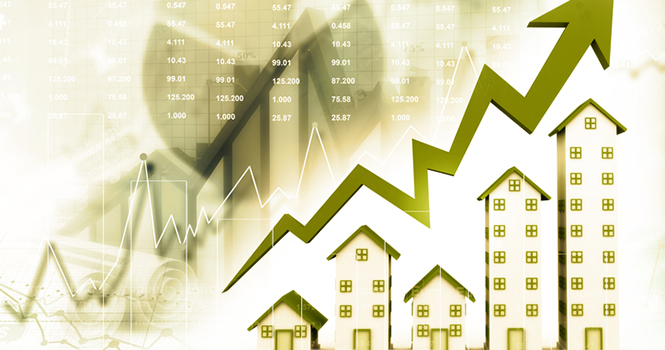
The boom is continuing for home prices, with a gain in March of 6.5 percent, according to the S&P CoreLogic/Case-Shiller Indices.
The S&P CoreLogic Case-Shiller U.S. National Home Price NSA Index’s 10-City Composite, which is an average of 10 metros (Boston, Chicago, Denver, Las Vegas, Los Angeles, Miami, New York, San Diego, San Francisco and Washington, D.C.), rose 6.5 percent year-over-year, an increase from 6.4 percent in February. The 20-City Composite—which is an average of the 10 metros in the 10-City Composite, plus Atlanta, Charlotte, Cleveland, Dallas, Detroit, Minneapolis, Phoenix, Portland, Seattle and Tampa—rose 6.8 percent year-over-year, which is comparable to February. Month-over-month, both the 10-City Composite and the 20-City composite rose, 0.9 percent and 1 percent, respectively.
“The home price increases continue, with the National Index rising at 6.5 percent per year,” says David M. Blitzer, chairman and managing director of the S&P Dow Jones Indices Index Committee.
“Looking across various national statistics on sales of new or existing homes, permits for new construction, and financing terms, two figures that stand out are rapidly rising home prices and low inventories of existing homes for sale,” Blitzer says. “Months-supply, which combines inventory levels and sales, is currently at 3.8 months, lower than the levels of the 1990s before the housing boom and bust.
“Until inventories increase faster than sales, or the economy slows significantly, home prices are likely to continue rising,” says Blitzer. “Compared to the price gains of the last boom in the early 2000s, things are calmer today.”
“The solid gain in home prices of 6.5 percent in March added roughly $150 billion to housing wealth during the month,” said Lawrence Yun, chief economist at the National Association of REALTORS® (NAR), in a statement. “The continuing run-up in home prices above the pace of income growth is simply not sustainable. From the cyclical low point in home prices six years ago, a typical home price has increased by 48 percent, while the average wage rate has grown by only 14 percent. Rising interest rates also do not help with affordability; therefore, more supply is needed to level out home prices. Homebuilding will be the key as to how the housing market performs in the upcoming years.”
The complete data for the 20 markets measured by S&P:
Atlanta, Ga.
Month-Over-Month (MoM): 0.8%
Year-Over-Year (YoY): 6.2%
Boston, Mass.
MoM: 1.2%
YoY: 5.8%
Charlotte, N.C.
MoM: 1%
YoY: 6.2%
Chicago, Ill.
MoM: 1.1%
YoY: 2.8%
Cleveland, Ohio
MoM: 0.3%
YoY: 4.6%
Dallas, Texas
MoM: 0.7%
YoY: 5.8%
Denver, Colo.
MoM: 1.4%
YoY: 8.6%
Detroit, Mich.
MoM: 1.1%
YoY: 7.9%
Las Vegas, Nev.
MoM: 1.5%
YoY: 12.4%
Los Angeles, Calif.
MoM: 0.9%
YoY: 8.1%
Miami, Fla.
MoM: 0.7%
YoY: 5%
Minneapolis, Minn.
MoM: 1.7%
YoY: 6.1%
New York, N.Y.
MoM: 0.1%
YoY: 5.2%
Phoenix, Ariz.
MoM: 0.9%
YoY: 6.8%
Portland, Ore.
MoM: 1%
YoY: 6.7%
San Diego, Calif.
MoM: 1%
YoY: 7.7%
San Francisco, Calif.
MoM: 2.1%
YoY: 11.3%
Seattle, Wash.
MoM: 2.8%
YoY: 13%
Tampa, Fla.
MoM: 0.6%
YoY: 7.5%
Washington, D.C.
MoM: 1.1%
YoY: 3%